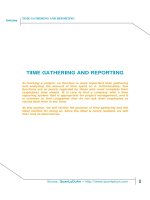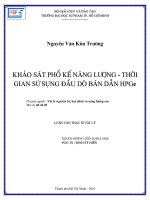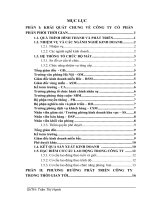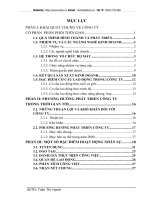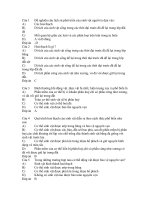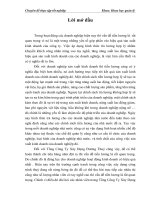Phân lượng thời gian
Bạn đang xem bản rút gọn của tài liệu. Xem và tải ngay bản đầy đủ của tài liệu tại đây (18.67 KB, 3 trang )
TIME GATHERING AND REPORTING
Source: QuanLyDuAn –
1
Articles
TIME GATHERING AND REPORTING
In tracking a project, no function is more important than gathering
and analyzing the amount of time spent on it. Unfortunately, few
functions are as poorly regarded by those who must complete their
(expletive) time sheets. It is rare to find a company with a time
reporting system that is appropriate for project management, and it
is common to find companies that do not ask their employees to
record their time in any form.
In this section, we will review the purpose of time gathering and the
ideal method for doing so. Since the ideal is rarely realized, we will
then look at alternatives.
TIME GATHERING AND REPORTING
Source: QuanLyDuAn –
2
Articles
Companies that collect employee time have a number of reasons for doing
so, including payroll calculations, determining vacation and sick leave
entitlements, and calculating overtime benefits such as time banking or
additional pay. While these functions are crucial for the financial operations
of the organization, they are irrelevant for project managers. These people
need to collect time in order to measure actual performance on specific
activities against the activity estimates and, in the best of all conditions, to
gather revised estimates for the completion of each activity. This
requirement means that time is to be gathered by activity, not simply on the
project as a whole. Since the estimates are prepared by activity and the
schedule is presented by activity, activities are the only reasonable way to
track progress. Since daily hours are not relevant to project tracking, a time
sheet need not specify days of the week except as a tool to help team
members track their hours each day.
Tracking by activities has another benefit at the end of the project. It is
usually revealing to examine the variation between the estimate and the time
actually spent on each activity. By determining where the estimates varied
the most in either direction, the project can build up a base of experience
that will improve estimating and, ultimately, the ability of its project
managers to create plans that are more realistic and more likely to be met.
The ideal time sheet also asks each employee to estimate the amount of time
remaining for each activity. This is called the "estimate to complete" or ETC.
Each week, the time sheets are processed by a time system, which can be as
simple as a spreadsheet. The time system produces a report listing each
activity on the project, giving the total hours spent to date and the ETC.
Adding the hours spent to date and the ETC gives the "estimate at
completion" or EAC, which is the number of hours of effort that the activity is
expected to have taken when it is complete. For example, if a project activity
has an estimate of four weeks, two weeks of which have been spent, and the
team member responsible for the activity estimates that it will take three
weeks of effort to finish, the EAC is five weeks. The variance between the
four-week estimate and the five-week EAC alerts the project manager two
weeks ahead of the scheduled completion that there is a problem, allowing
time to respond. The process of gathering weekly ETCs also serves as an
ongoing commitment by the team members to the completion of their
activities.
TIME GATHERING AND REPORTING
Source: QuanLyDuAn –
3
Articles
The ideal time sheet system also allows the project manager to control the
activities to which various people can post time. The advantages of this are
twofold: The project manager can ensure that the people charging time to an
activity, and by extension to the entire project, are authorized to do so, and
when an activity is reported as complete, it can be closed with no more time
permitted to be charged against it.
The ability to restrict the charging of time gives the project manager a
method of controlling the hours charged to a project rather than having to
review and correct time that has been improperly posted.
The ideal time system, therefore, has these characteristics:
- It gathers time each week by activity.
- It gathers estimates of time remaining for each activity.
- It enables the project manager to restrict who can record time to
each activity.
- It provides weekly reports by activity indicating potential overruns.
